Vyne’s State of the Dental Industry Report 2021
Survey of dental practices reveals insights into practices’ sentiments on the impact of 2020, the industry, hiring, technology, and overall business outlook for 2021
ATLANTA, GA – January 5, 2021 – Vyne, a recognized market leader in healthcare information exchange and electronic communication management, announced today the results of the Vyne State of the Dental Industry Report 2021, a comprehensive study of over 400 dental practices in the U.S. that sought to understand how they have transformed in 2020 and their perspectives headed into the new year.
The study was categorized into five focus areas: Impact of 2020, hiring and the economy, technology, industry, and overall practice outlook.
Impact of 2020
Dental practices faced significant challenges in 2020 due to COVID-19. The greatest impact of the pandemic on dental practices was financials (42%). Patient volume followed at 32%, and nearly half of respondents (47%) had to shift their investment priorities in 2020.
It was discovered that 72% of dental practices surveyed did not offer teledentistry in 2020. Twenty-three percent of practices are considering teledentistry in 2021, and 62% said they would not offer the service in 2021.
In terms of patients’ views on resuming dental services, 30% of practice leaders said their patients are actively seeking treatment or services; 21% said patients are ready to resume treatment or services; 56% are willing to resume if safety protocols are in place, and 8% of patients will not resume treatment or services until a COVID-19 vaccine is available.
As a result of the pandemic, a small percentage of practice leaders may consider selling in 2021 (8%). Four percent may consider a DSO affiliation and 3% may consider merging with another practice. Just under 1% said they are considering a local hospital or health system affiliation. The majority of practices (84%) are considering “other” changes in 2021. When asked to specify, responses included dropping in-network status with all insurance providers, expanding their services portfolio, and offering in-house patient payment plans.
Hiring and the economy
Based on current economic conditions and patient demand, 46% of practices said they are not planning to hire additional staff in 2021. Practices are also not planning to adjust current staffers’ schedules. Eighty-seven percent said that based on current conditions, they are not planning to turn part-time staff into full-time staff, or vice versa.
When it comes to perspectives on whether recruitment may be challenging for practices in 2021, the responses were split. Forty-eight percent said they felt it would be challenging, and 51% said they did not think it would be challenging.
Technology
When asked if their practice planned to invest in practice management technology in 2021, 17% said they likely would; 65% said it was unlikely and 17% were unsure. When it comes to software investment in 2021, 24% are planning to spend less than $299/month; 11% plan to spend less than $500/month and almost 40% were not sure what their practice planned to invest in technology.
The top three motivators for seeking new software in 2021 were to reduce paperwork (16%), modernize the office (14%), and lower costs of current software solutions (13%).
Industry
To navigate changes within their practice and the industry, 43% look to the American Dental Association for guidance. Twenty-nine percent look to their local or state dental association, and 13% read industry publications.
Practices said that their preferred method of communication with patients in 2021 will be text messages (53%). Email came in at 24% and phone was the preferred communication channel of just 19% of practices.
Practice Outlook
Patient volume was the top challenge practices anticipate for 2021 (44%). Hiring and staffing (19%) and industry updates and regulations (17%) were the second and third challenges identified.
When asked what actions could make their practice more productive or profitable in 2021, 38% said marketing. Thirty-one percent of practices said that less coding or industry changes would help them be more productive or profitable and 26% said technology adoption.
Eighty-six percent of practice leaders are confident (35%) or very confident (51%) in their practice’s future. Just 13% were somewhat confident or neutral about their practice’s outlook.
“The Vyne State of the Dental Industry Report 2021 was designed to gain perspectives from the industry that tell a story about what practices have gone through in 2020, and how they are feeling going into 2021,” said Vyne Dental president Steve Roberts. “These insights are not only valuable to Vyne Dental as we look to improve how we support practices in revenue cycle success, but also to the industry as we work to improve dental practices and facilitate better patient care.”
Methodology
Vyne Dental surveyed 400 of its clients from across the United States in November and December of 2020. Seventy-seven percent of respondents were from solo dental practices and 23% were from group dental practices.
Media contacts
Amanda DeFuria, Millerrupp
amandadefuria@millerrupp.com
© 2021 Napa EA/MEDX, LLC. All rights reserved. Vyne logos, product and service names, including but not limited to, FastAttach mentioned herein are registered trademarks and are the property of Electronic Attachment, Inc., or their respective affiliated entities.
All third-party trademarks and tradenames (including logos and icons) referenced are and remain the property of their respective owners.




